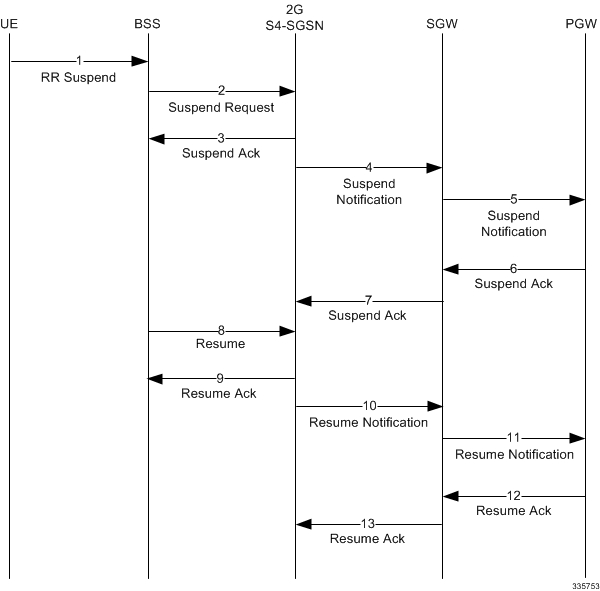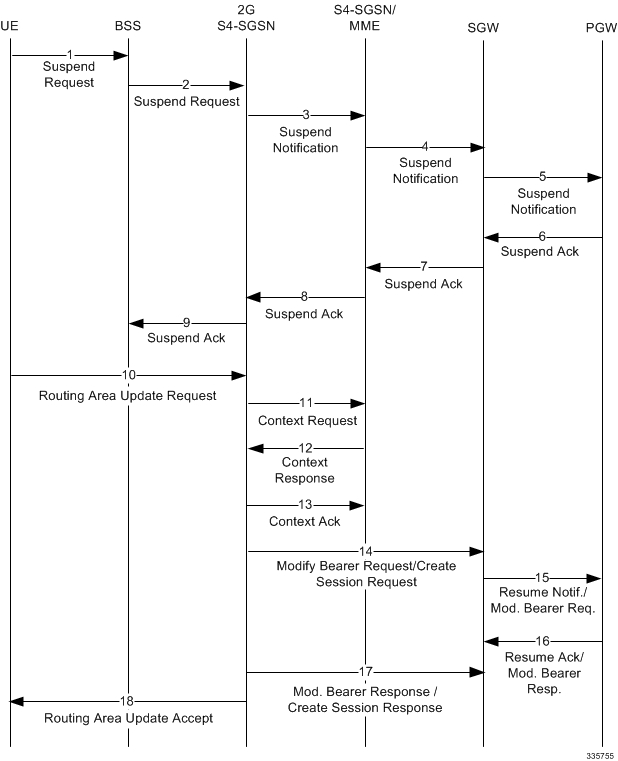Feature Description
The S4-SGSN Suspend/Resume feature provides support for suspend/resume procedures from the BSS and a peer S4-SGSN.
When a UE is in a 2G coverage area wants to make a circuit switched voice call but the Class A mode of operation is not supported by the network, then the packet switched data session (PDP contexts) must be suspended before the voice call can be made. In this case, the BSS sends a Suspend Request to the SGSN. If the UE is already attached at that SGSN then the suspend request is handled via an intra-SGSN suspend/resume procedure. If the UE is not attached at the SGSN then the Suspend Request is forwarded to a peer SGSN/MME through GTPv2 and an inter-SGSN/SGSN-MME suspend procedure occurs. Once the UE completes the voice call, either the BSS sends a resume request to resume the suspended PDPs or the UE directly sends a Routing Area Update Request (RAU) in 2G which will be treated as an implicit resume.
The ability for a GPRS user to access circuit-switched services depends on the subscription held, the network capabilities, and the MS capabilities.
Suspension of GPRS Services
The MS sends a request to the network for the suspension of GPRS services when the MS or the network limitations make it unable to communicate on GPRS channels in one or more of the following scenarios:
- A GPRS-attached MS enters dedicated mode and the support of the Class A mode of operation is not possible (for example, the MS only supports DTM and the network only supports independent CS and PS).
- During CS connection, the MS performs a handover from Iu mode to A/Gb mode, and the MS or the network limitations make it unable to support CS/PS mode of operation, (for example, an MS in CS/PS mode of operation in Iu mode during a CS connection reverts to class-B mode of operation in A/Gb mode).
- When an MS in class A mode of operation is handed over to a cell where the support of Class A mode of operation is not possible (for example, a DTM mobile station entering a cell that does not support DTM).
Relationships to Other Features
One of the following configurations must exist on the SGSN for the Suspend Resume feature to work properly on the S4-SGSN:
- 2G SGSN Service + S4-SGSN Support
- 3G SGSN Service + S4-SGSN Support
- 2G SGSN Service + 3G SGSN Service + S4-SGSN Support
Configuration procedures for the above deployments are available in this guide.







 Feedback
Feedback